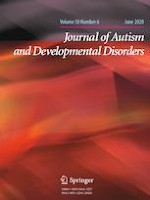19-03-2019 | Brief Report
Brief Report: Behavior Disorders and Social Skills in Adolescents with Autism Spectrum Disorder: Does IQ Matter?
Gepubliceerd in: Journal of Autism and Developmental Disorders | Uitgave 6/2020
Log in om toegang te krijgenAbstract
Disruptive behavior disorders and social skills were assessed in 187 youth aged 13 years, with typical cognitive development (TD n = 98), intellectual disability (ID n = 37), autism spectrum disorder (ASD, IQ > = 85, n = 26), or Autism Spectrum Disorder with ID (ASD/ID; IQ < 85, n = 26). The primary question was whether youth with ASD and co-morbid ID had greater associated adjustment problems than youth with ASD-only. Youth with ASD, with or without ID, had significantly higher behavior problems and lower social skills than their TD peers. However, youth with ASD and co-morbid ID did not differ from youth with ASD-only on any variable assessed, including behavior problems, behavior disorders, social acceptance, social skills, and student teacher relationships.
